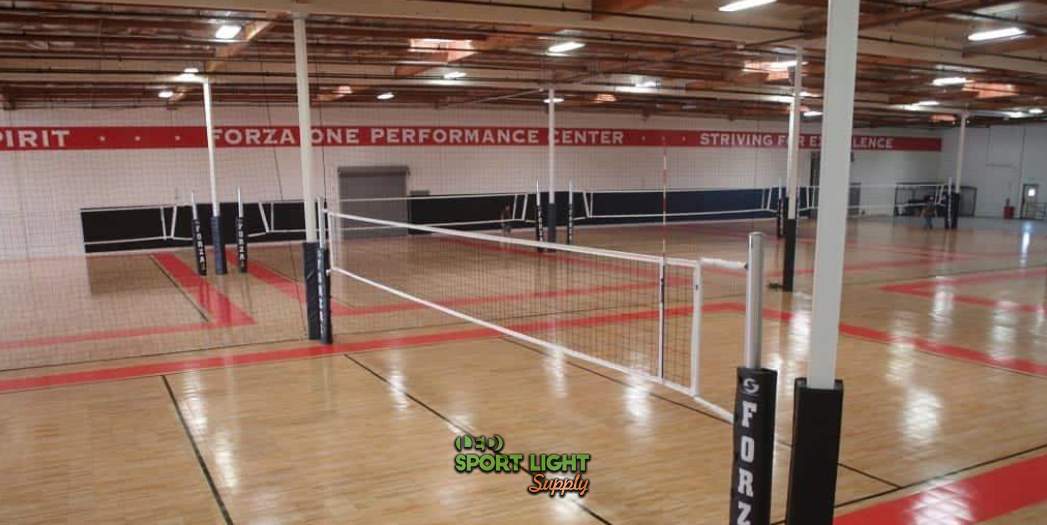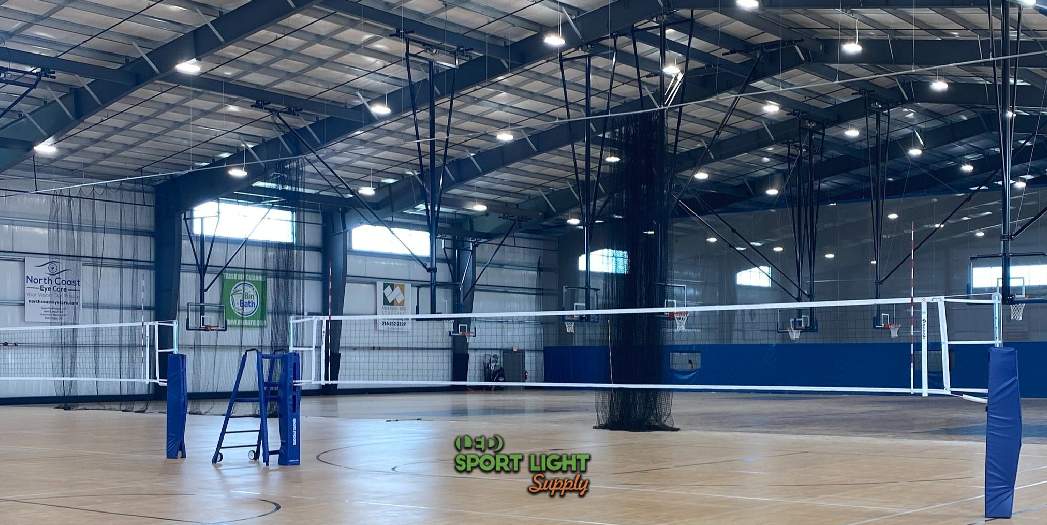Envision a volleyball court where every jump, spike, and dive is showcased in brilliant, clear light. In volleyball, lighting is more than just a necessity; it’s a vital element that enhances both the players’ performance and the spectators’ experience. Proper illumination transforms the court into a dynamic stage, ensuring athletes can perform at their best and fans can fully immerse themselves in the action. Great lighting turns each match into a vibrant spectacle, where every moment shines with clarity and excitement.
In volleyball, clarity and consistency of the playing field are paramount. Proper lighting not only enhances the visibility of the ball but also reduces glare and shadows that can affect player performance. The right lighting ensures that players can track the ball accurately and maintain their focus throughout the match. For spectators, well-designed lighting enhances the viewing experience, making every moment of the game more engaging and enjoyable.
Table of Contents
ToggleLED lighting has revolutionized the way sports facilities are illuminated, offering numerous benefits over traditional lighting solutions. LED lights are known for their energy efficiency, longevity, and superior light quality. In the context of volleyball, LED technology provides several advantages that align perfectly with the requirements of the sport.
One of the primary benefits of LED lighting is its ability to deliver high illuminance levels with minimal energy consumption. This is crucial for volleyball courts, where consistent and bright lighting is essential for both players and spectators. Additionally, LEDs offer a wide range of color temperatures, allowing for precise control over the light quality. This flexibility ensures that the lighting can be tailored to meet the specific needs of the court, enhancing visibility and reducing eye strain.

Illuminance levels are a fundamental aspect of effective volleyball court lighting. To ensure that players have a clear view of the ball and can respond promptly, indoor volleyball courts should typically achieve an illuminance level of 500 to 700 lux. This brightness range is sufficient to highlight every move, enabling players to track the ball accurately and perform with precision. For professional and high-level competitions, where visibility is crucial for both players and broadcasters, higher lux levels may be required. This ensures that every detail is captured clearly, enhancing the overall quality of gameplay and broadcast.
Uniform lighting distribution is essential to avoid the negative effects of shadows and bright spots on the volleyball court. Inconsistent lighting can disrupt players’ focus and affect their performance. Shadows may obscure parts of the court, making it difficult to gauge the ball’s position, while bright spots can cause visual distractions. To achieve even lighting, it is important to install multiple light fixtures strategically around the court. LED lights are particularly effective in this regard due to their ability to provide consistent illumination. By carefully positioning and angling the fixtures, facilities can ensure that light is evenly distributed across the court, minimizing shadows and enhancing overall visibility for both players and spectators.
The strategic placement of lights is crucial for achieving the desired lighting effect on a volleyball court. Properly positioned lighting ensures comprehensive coverage and minimizes shadows that can impact gameplay. Typically, volleyball courts require a combination of overhead and side lighting to achieve optimal illumination.
Overhead lights are installed above the volleyball court to provide primary illumination. This setup is essential for ensuring that the central playing area is well-lit, allowing players to see the ball clearly from any position on the court. The overhead lights should be positioned to cover the entire playing area uniformly, without creating excessive glare or shadows. The height and angle of these lights must be carefully calculated to achieve the right balance of brightness and minimize potential glare for both players and spectators.
Side lights are used in conjunction with overhead lights to fill in gaps and ensure uniform coverage across the court. Positioned along the sides of the court, these lights help to eliminate shadows and bright spots that can be created by the primary overhead lighting. By complementing the overhead fixtures, side lights contribute to a more balanced and consistent lighting environment. This is particularly important in large or irregularly shaped courts where overhead lights alone may not provide complete coverage.
The number of lights required for a volleyball court depends on several factors, including the size of the court and the specific lighting needs. For a standard indoor volleyball court, a minimum of 12 to 16 LED fixtures is generally recommended. This number ensures that there is sufficient illumination to achieve the desired lux levels and uniformity across the court.
The placement and height of the light fixtures play a significant role in achieving effective coverage and minimizing glare. Fixtures should be mounted at a height that provides adequate illumination for the entire court while avoiding direct light into players’ eyes. The height and angle of the fixtures must be carefully adjusted to ensure even lighting and reduce the risk of glare. Properly positioned fixtures also help to prevent shadows and ensure that all areas of the court are well-lit.
For larger or specialized volleyball courts, additional fixtures may be necessary to meet the increased lighting demands. In these cases, the number of lights may need to be adjusted to achieve the required lux levels and ensure uniform illumination. Special attention should be given to the placement and angle of the fixtures to accommodate the unique dimensions and requirements of the court. Advanced planning and precise installation are key to ensuring that the lighting system delivers optimal performance across the entire playing area.

The impact of lighting on players and spectators cannot be overstated. For players, proper lighting is essential for maintaining focus and performance. Glare and shadows can interfere with their ability to track the ball and anticipate opponents’ movements. By providing a well-lit environment with minimal distractions, players can perform at their best and contribute to an exciting and competitive game.
For spectators, the quality of lighting affects their overall enjoyment of the game. Well-lit courts enhance visibility and make it easier for fans to follow the action. Additionally, high-quality lighting contributes to the visual appeal of the game, making it more engaging and entertaining. In professional settings, lighting can also impact the quality of broadcast coverage, ensuring that viewers at home have a clear and immersive experience.
In addition to their superior performance, LED lights are known for their energy efficiency and environmental benefits. Traditional lighting solutions, such as incandescent and halogen bulbs, consume more energy and have a shorter lifespan compared to LEDs. By opting for LED lighting, sports facilities can significantly reduce their energy consumption and lower operational costs.
Furthermore, LED lights have a lower environmental impact due to their reduced energy usage and longer lifespan. They produce less heat, which helps maintain a comfortable environment in the arena. Additionally, LEDs do not contain hazardous materials like mercury, making them a more eco-friendly option for sports lighting.
The longevity and maintenance requirements of lighting fixtures are crucial factors for sports facilities. LED lights are renowned for their long lifespan, which reduces the need for frequent replacements and maintenance. This is particularly beneficial for volleyball courts, where consistent lighting is essential for both practice and competition.
Regular maintenance is still necessary to ensure that the lights continue to perform at their best. This includes cleaning the fixtures to remove dust and debris that can affect light output. Periodic inspections should be conducted to identify any issues and address them promptly. By adhering to a proactive maintenance schedule, facilities can ensure that their lighting remains in optimal condition and continues to support high-quality gameplay.
When designing lighting for a volleyball court, achieving a balance between brightness and uniformity is essential. Brightness levels, measured in lux, must be adequate to ensure that players can see the ball clearly and react swiftly. For standard indoor courts, an illuminance level of 500 to 700 lux is recommended. This ensures optimal visibility for both players and spectators.
Uniformity in lighting is equally important. Uneven lighting can create distracting shadows and bright spots that disrupt gameplay and diminish the overall experience. To achieve uniformity, it is crucial to use a sufficient number of light fixtures and position them strategically around the court. The goal is to provide consistent illumination across the entire playing area, minimizing any areas of darkness or excessive brightness. LED fixtures are particularly effective in this regard due to their ability to deliver even and consistent light distribution.
The type of light fixtures used significantly impacts the effectiveness of the court’s lighting. LED fixtures are preferred for their energy efficiency, long lifespan, and ability to provide high-quality illumination. When selecting LED fixtures, consider factors such as their lumen output, color temperature, and beam angle. High-lumen fixtures are necessary to achieve the desired brightness levels, while color temperature should be chosen to enhance visibility and reduce glare. Beam angle affects how light is distributed across the court, so selecting fixtures with appropriate beam angles ensures even coverage.
The placement of light fixtures is a critical aspect of the lighting design. Proper positioning ensures that the entire court is adequately lit and helps to avoid shadows and glare. Overhead lights should be installed to cover the central playing area, while side lights fill in any gaps and provide additional coverage. The height at which fixtures are mounted also affects the quality of illumination. Fixtures should be installed at a height that balances brightness with minimal glare, ensuring that players and spectators can enjoy clear and unobstructed views.
Lighting design should also consider the flexibility needed to accommodate various types of events. Volleyball courts are used for a range of activities, from practice sessions to high-stakes tournaments and recreational games. An effective lighting system should be adjustable to meet the different requirements of these scenarios. For example, adjustable lighting allows for changes in brightness levels and can be tailored to the specific needs of each event. This flexibility ensures that the lighting system remains versatile and suitable for different occasions, enhancing the overall functionality of the court.
In addition to general design considerations, it is important to address the specific needs of both players and spectators. For players, the lighting should provide clear visibility and minimize distractions, such as glare and shadows. For spectators, well-lit courts enhance the viewing experience by improving visibility and creating an engaging atmosphere. The design should also account for the impact of lighting on broadcast quality, ensuring that the court is well-lit for clear and high-quality video coverage.
In volleyball, the clarity and consistency of the playing field are crucial for both performance and enjoyment. Proper lighting not only enhances visibility, allowing players to track the ball with precision and maintain focus, but it also eliminates glare and shadows that could disrupt their game. For spectators, well-designed lighting improves the viewing experience, making every moment of the match more engaging and enjoyable. With the advent of LED lighting technology, facilities can achieve superior illumination that meets the rigorous demands of the sport while offering energy efficiency and environmental benefits. Investing in high-quality, strategically placed LED lighting ensures a dynamic and immersive experience for players and fans alike, elevating every game to new heights.
Drop us a line to receive a free lighting design